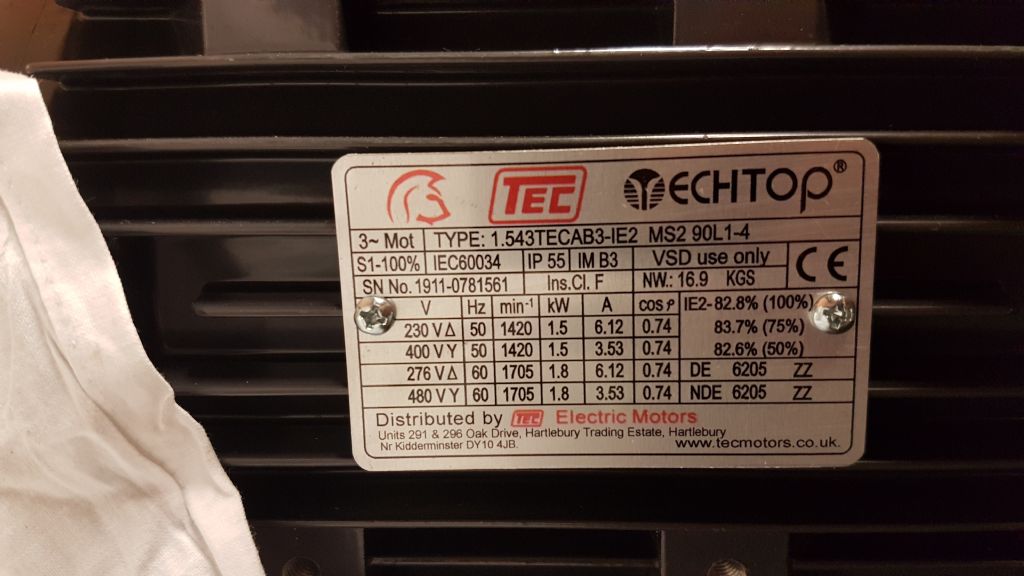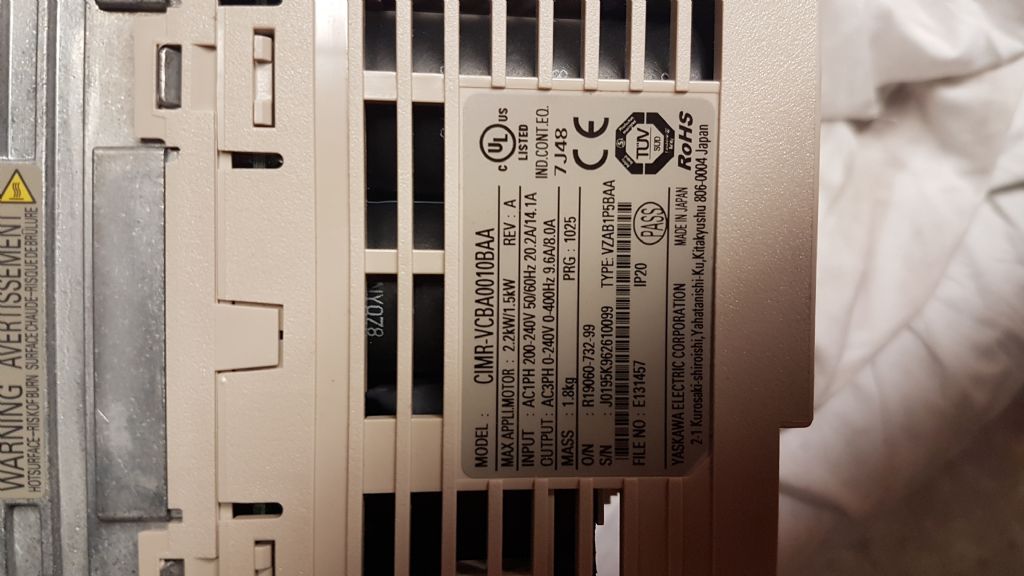Sean
One often overlooked issue when changing from variator to VFD drive is speed range. Typically variators, and the functionally equivalent expanding – contracting pulley Reeves drives, have a theoretical speed range approaching 10:1 from fastest to slowest. In practice 8:1 seems to be more like what you can actually use.
For all sorts of complicated physical reasons induction motor torque, and therefore power output, falls off when you try to operate too far off its design speed. Big surprise. Not!
In practice modern motors and good brand VFDs will run between about ± 1/3 rd of the nominal speed range with minimal effect on power delivered to the spindle. Call it 40 to 70 Hz from the VFD, although as most modern motors are 50/60 hz devices 40 to 80 is reasonable. There will be some drop off in torque at the low end but variators aren't exceptionally efficient devices, Reeves drives are even worse. A simple belt drive is more efficient so odds are you will get the power back simply from lower losses.
Generally, with modern equipment, and a little bit of thought as to gear ratios you can do just fine over a 4:1 speed range. You will loose out a little on power, most likely at the lower end, but the results are usually satisfactory for home use.
Especially as you are unlikely to drive the lathe in a manner that needs its full power.
As the price differential between 6 pole "1000 rpm" and standard 4 pole "1440 rpm" motors has narrowed so much in recent years I tend to advocate using a 6 pole motor to get more oomph at the low end. Generally high speeds are for small work so the power you can use before pretzelling the job is limited. Alternatively a larger 4 pole motor can be used to get more low speed torque but these days that, including the bigger VFD, tends to be a little more expensive. Modern vertical mills take the larger VFD controlled motor idea to extremes with monster, by old style multispeed gearbox or belt drive standards, motors to give a wide speed range whist keeping plenty of low speed drive.
The most satisfactory way of dealing with the conversion is probably to incorporate some sort of two speed primary drive into the system. Nominal 4:1 on the VFD and 2:1 on the primary would match the variator performance nicely. An external lever control for two speed gearbox or twin drive belt selection would be neat but in practice shifting by hand ought to be fine as the VFD control range will let you overlap pretty happily when you need to go a bit out of the preferred range. Annoying to keep opening the door tho'.
I'm surprised that no one has published a design for a simple remote mechanical change 2 speed unit for this sort of thing. One day my Varispeed Bridgeport will get changed for a VFD drive. I have a nice solenoid opearted 2 speed gearbox off a very old washing machine that might do. Or maybe get creative with the electric clutches used in car air conditioning systems.
Clive
Pete Rimmer.






